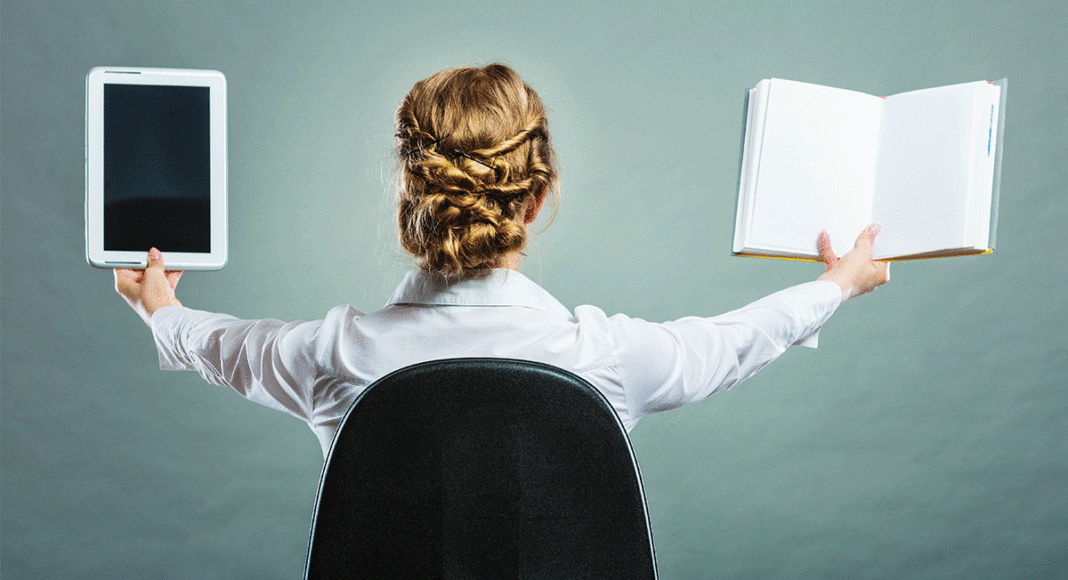I’ll never walk through Logos, or any used bookstore or library in the world, without greedily filling my nostrils with the smell of old books—musty and slightly acrid, organic material and glue breaking down in the more acidic pages of the past. It’s a scent that holds fingerprints and dust mites and the graphite underlines of conscious beings no longer with us.
“People have tried to bottle the smell of old books, but it’s the most elusive thing, like trying to recreate a great story. You can’t … ,” Sarah Jessica Parker told the New York Times Style magazine last week, in an article that details her new position as editorial director at Hogarth—where she’ll help to find, edit and publish three or four new novels a year, as well as partner with the American Library Association “to get more books, not just Hogarth books, into more hands.”
When the e-book market skyrocketed around 2008, many saw it as a knife wound in the femoral of the book as we knew it—a startling development for anybody who’s come to live by John Waters’ rule, “If you go home with somebody and they don’t have books, don’t fuck them.”
A study released last month by the Pew Institute found that of the 73 percent of Americans who say they’ve read a book in the past 12 months, 65 percent read on paper. That’s more than twice the number (28 percent) who said they’ve read an e-book—a number that has plateaued since 2014. (Audiobooks clocked in at 14 percent of books “read” last year.)
But the survival of old-fashioned reading surely has less to do with celebrity promotion or steamy subway scenes posted on instagram accounts like @hotdudesreading than it has to do with our brains.
Since the 1980s, the fields of psychology, computer engineering, and library and information science have conducted more than 100 studies into screen versus print reading. Before 1992, most of these studies reported that people read slower, less accurately and less comprehensively on screens than on paper, according to Scientific American. After 1992, studies have produced inconsistent results, with a slight majority confirming deeper reading on print.
On screens, humans tend to employ what neuroscience calls “non-linear reading,” where the eyes skim and dart around the page. Add in the web’s casino-effect vortex of distractions, and the net result is an experience that doesn’t always lend itself to deep reading.
“I always print a document before reading it,” says my sister, who reads almost constantly for her job as an attorney. “I can concentrate.”
Maryanne Wolf, director of the Center for Reading and Language Research at Tufts University, says that to keep the deep-reading part of the brain alive and well, we should make time to practice the “deeper, slow reading” associated with books on paper, and that parents and teachers should make sure that children are encouraged to do the same.
Of course, reading on smartphones and computer screens is a known cause of Computer Vision Syndrome (CVS), which affects—with headache, fatigue, blurred vision and neck pain—90 percent of people who spend three hours or more a day at a computer, according to the National Institute of Occupational Safety and Health. (The American Optometric Association recommends alleviating eye strain with the 20-20-20 rule: take a 20-second break to view something 20 feet away every 20 minutes). In terms of eye strain, the nice thing about reading e-ink is that it’s a lot like reading on paper, according to a 2013 study. So why are people still embracing primitive tree pulp and ink when the e-book is healthy on the eyes and much lighter to tote around than 50 books?
My own reason starts and ends with my mother being a librarian. Adopting an e-reader would be a betrayal of the highest order—no matter that her library, like most of them now, circulates a shared pool of e-books in addition to its DVDs and books. She’d love me less. Like many book consumers, I also appreciate the tactile physicality of a book; making pencil notes in the margins, and knowing where I am in the journey of imagination.
“The implicit feel of where you are in a physical book turns out to be more important than we realized,” says Abigail Sellen of Microsoft Research Cambridge in England in Scientific American. “Only when you get an e-book do you start to miss it.”
There’s another benefit to books and magazines: We lend them to friends, who don’t have to click a link or fire up their kindle later to get to it. When my sister finished reading about Sarah Jessica Parker, she left the New York Times magazine on the train for someone else to read—something we can’t do with smartphones or e-readers. At least for now.













